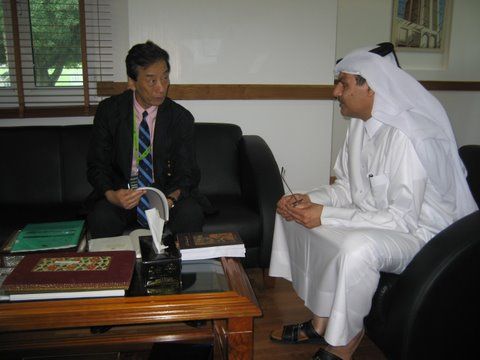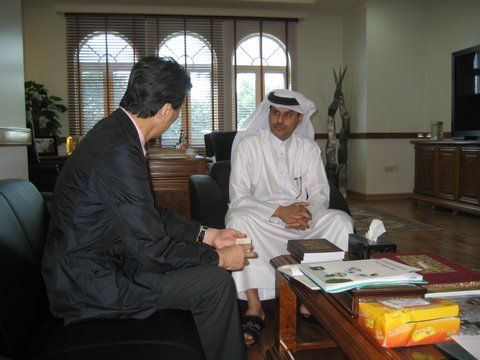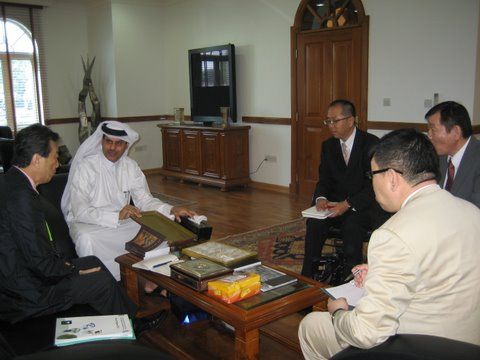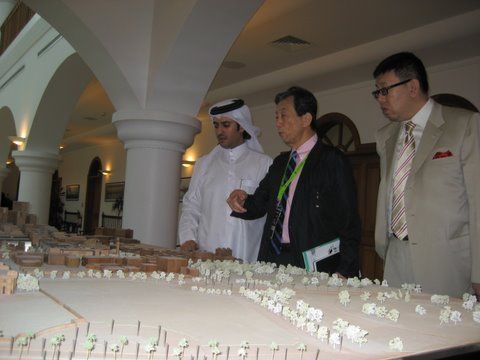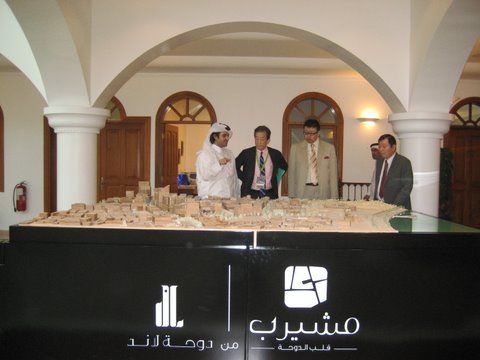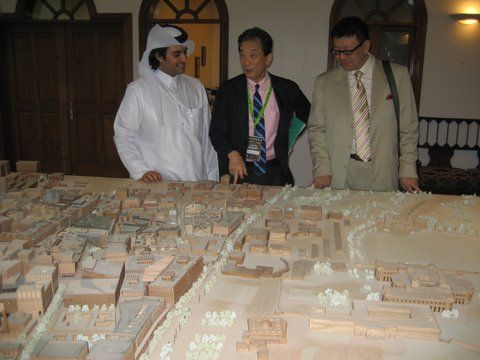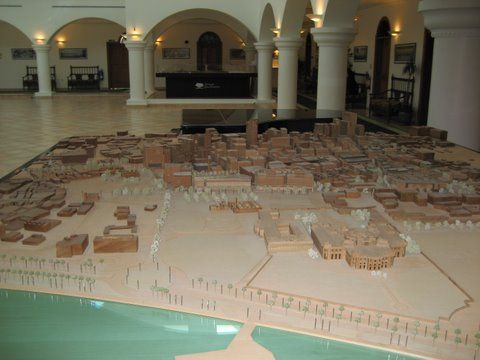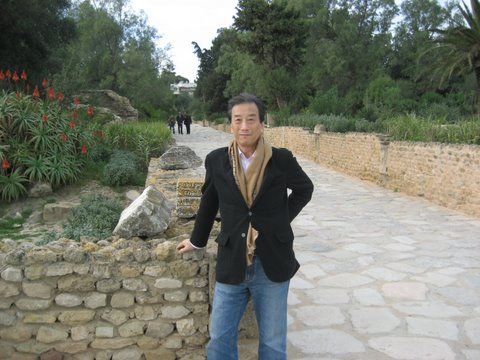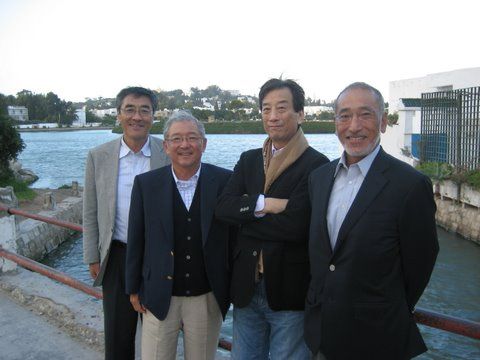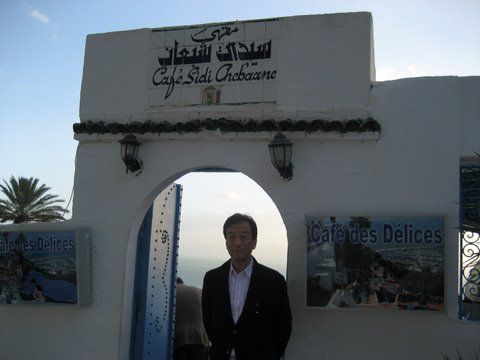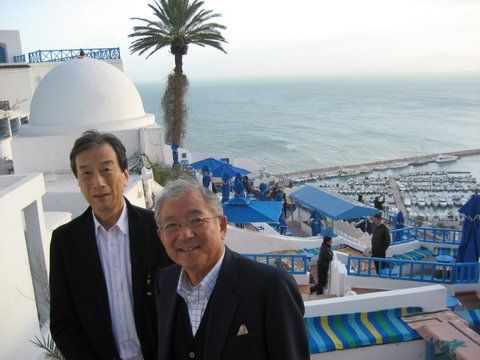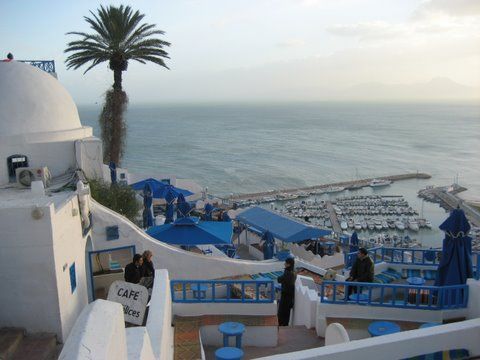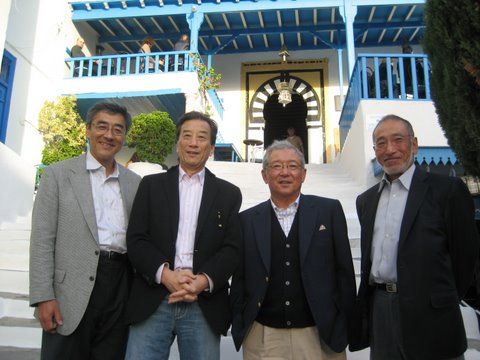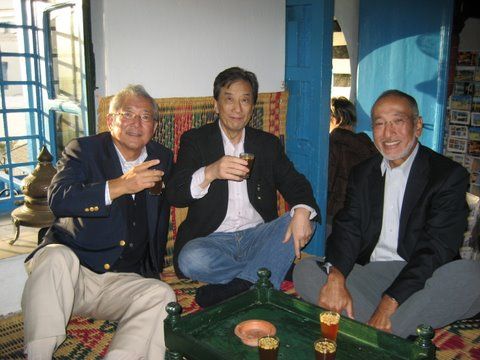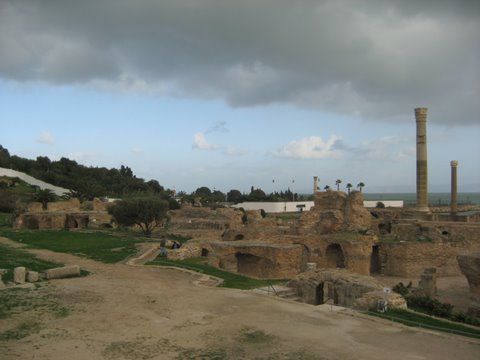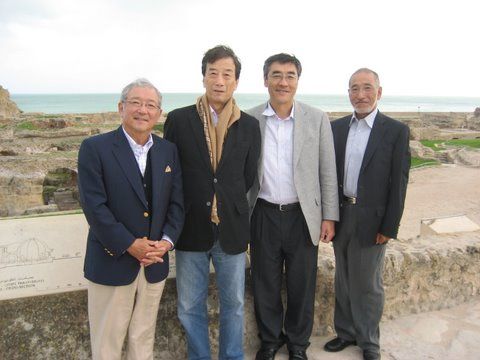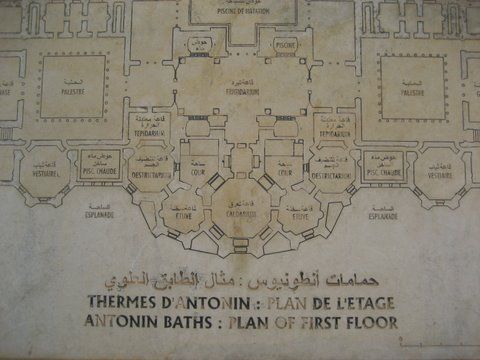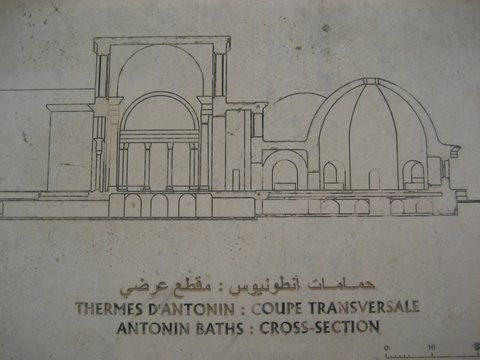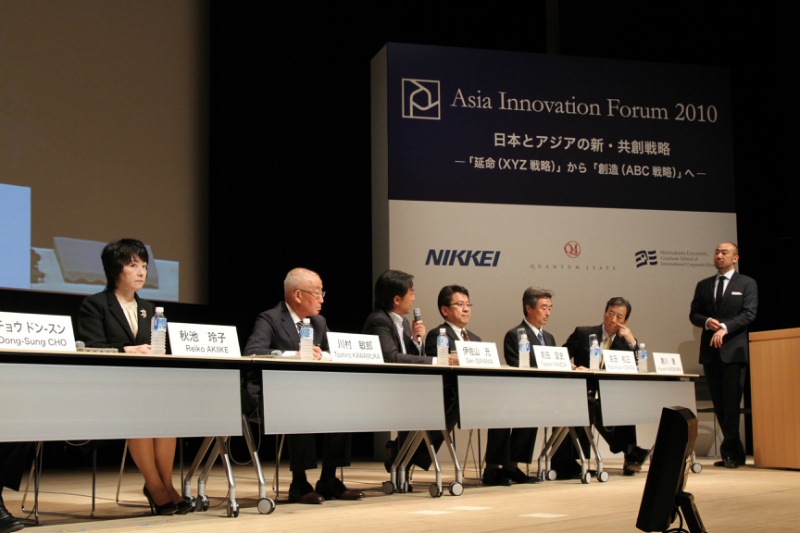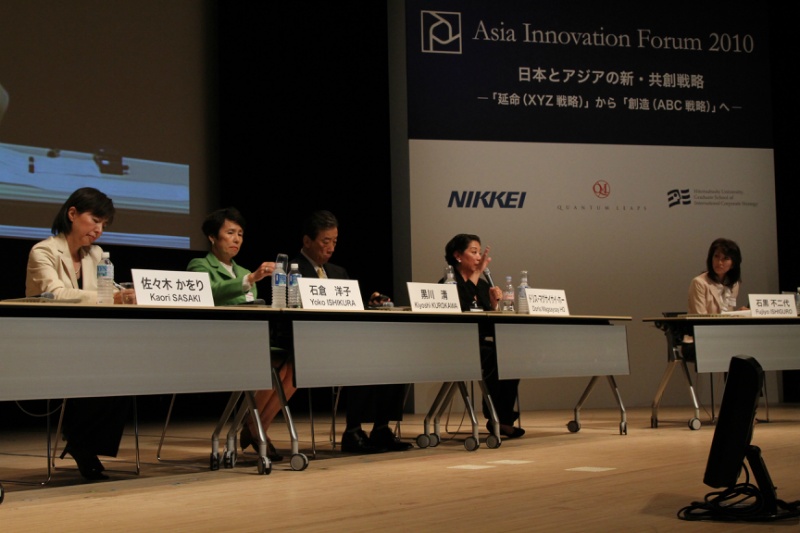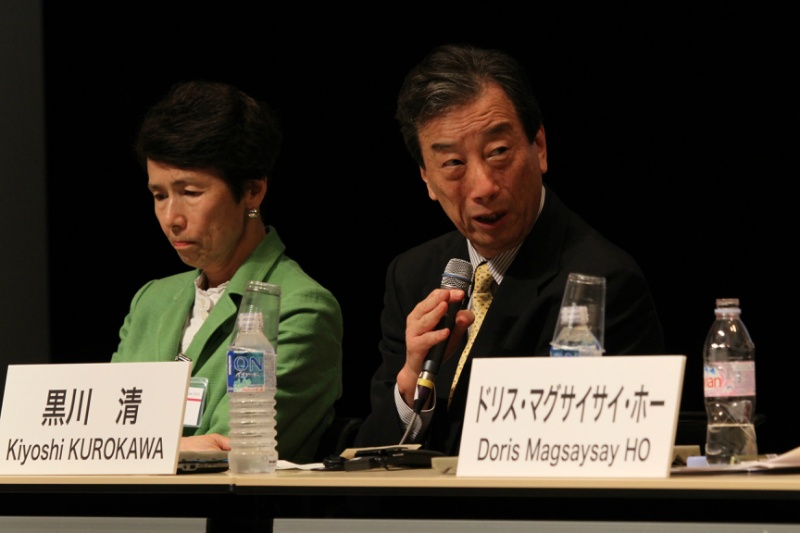After finishing the panel at Tunis, I left the hotel in late afternoon. Arriving at Doha, Qatar via Dubai at 6:30 am, I checked in at Sheraton again. I was here this past June (Ref.1), too. This time, it was right when Qatar won the 2022 World Cup Bid.
My travel was by the invitation of Qatar Foundation Annual Research Forum which will be held for two days. The Qatar Foundation (Ref.1) is one of the major institutions of Qatar focused on development of good education. Her Highness herself is the devoted driver of its activities, some of which have already produced great results. For example, the research laboratories of Cornell University, Carnegie Mellon University, Texas A&M University are all built on the huge premise of the Foundation.
Because this was their first Forum, the main purpose was to introduce the Qatar Foundation to the world. The Foundation attracted many participants this year. This country is very young, to begin with. And the nation is also very dedicated to human resource development, with the initiatives of the Qatar University. They are keen to education because they know that, although they are rapidly accumulating wealth as one of the major energy exporting nations of the world of gas and oil, the final resource this small island nation will be able to depend on for its future is the human resource.
Qatar is also a nation that protects and supports culture and art. A good example of this is the Museum of Islamic Art, which I have spoken about before on this site.
The Forum opened at 9am with the speech of Her Highness, the Queen. Between the programs, I enjoyed reading posters (especially those by the students). I was also a jury member that presided over the presentations of Biomedical Science researches. Dr. Elias Zerhouni (former Director of NIH), Dr. Peter Agre (a Nobel laureate of chemistry for his discovery of water channel) and Dr. Monsef Saloui(the head of GSK, RD)were also part of this jury. Elias and Moncef are my good friends, but I have not worked with Dr. Agre before. I did, however, know about his work, and had listened to several of his lectures. The forum was full of young energy. I was particularly impressed by the existence of many active women.
In the evening, I visited Ambassador Moji at the Japan embassy in Qatar with President Tsuciya and several people of Tsuchiya Corporation (Mr. Nishida, a very good Arabic speaker whom I saw at the embassy in Abu Dhabi was there also.) Then, we visited the residence of former Ambassador of Qatar to Japan, H.E. Reyad Ali Al-Ansari who recently returned to Qatar after 9 years of service in Japan and invited us for dinner. It is nice to experience expansion of human networks like this. H.E. Al-Ansari said that his son studied in the U.S. and is currently working in the oil business in Qatar. However, he seemed to be not so approving of his daughter’s studying abroad.
We paid a brief visit to the president of administration of Her Highness the next day at the head office of Qatar Foundation. It was unfortunately brief because our schedule was packed in the afternoon with many sessions on science policy etc. We need to have more Japanese researchers and youths participate in such occasions. It is important to promote the exchange of young people.
The result of the selection was announced at the evening reception. From our group, the award was given to a study done on defective hearing that identified the responsible DNA and showed that the deficiency was caused by the malfunctioning of its hair cells. The project was very nicely researched and the researcher answered each question with confidence. Her boss, the head of the administrative office at her hospital (who also happened to be a women), looked very happy. This head was also a very gifted and able person whom I truly enjoyed talking for some time with. I was seated at the same table as the professors of MIT, UCLA, and the Dean of the local Texas A&M research laboratory. We quite enjoyed the conversation over dinner because we had so many common topics to talk about. I had to leave during the dinner to catch the 22:50 airplane for Abu Dhabi, a forty minute flight.
Whenever I am exposed to the energy and motivation of young people, I always become eager to help. I also look forward to seeing more exchanges carried out between Japan and Qatar.
